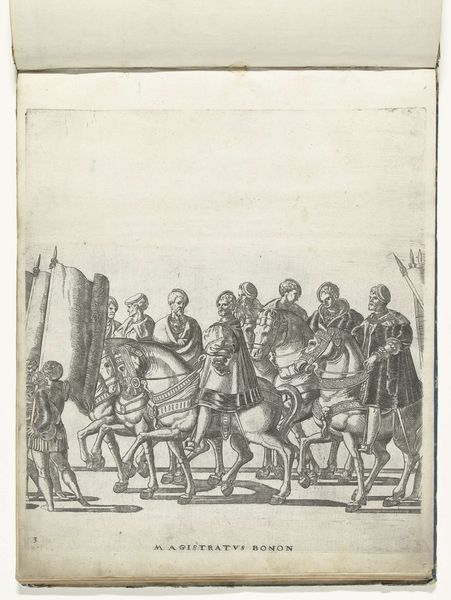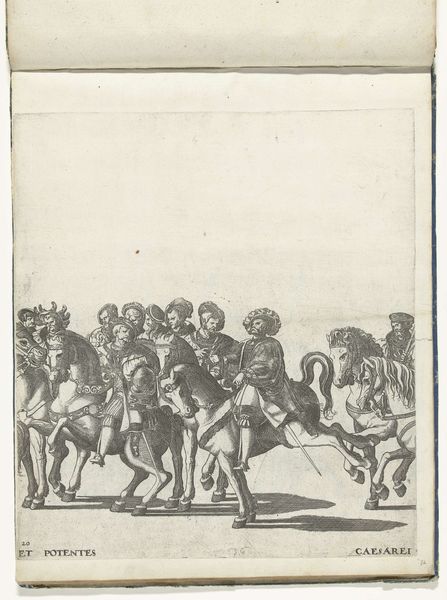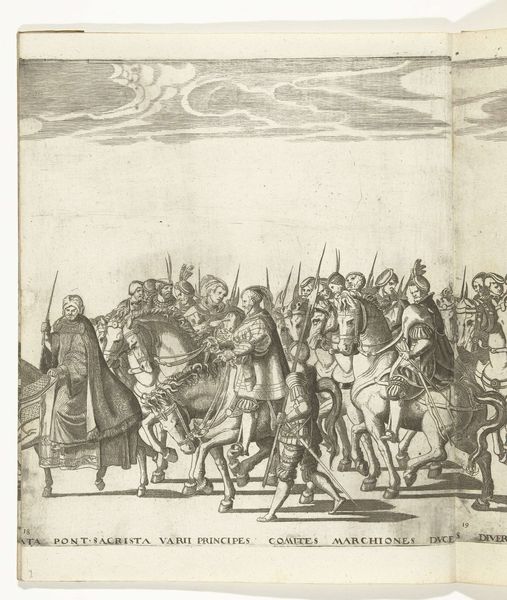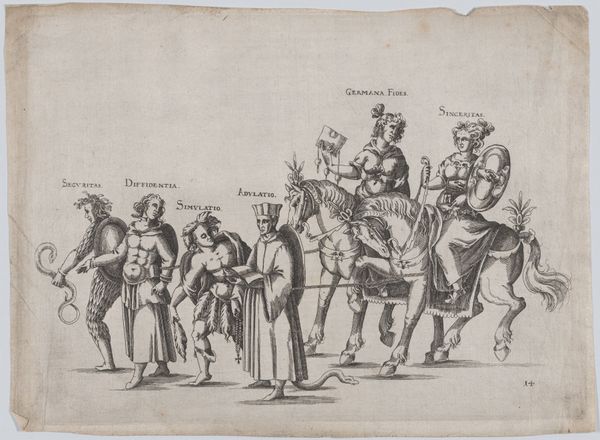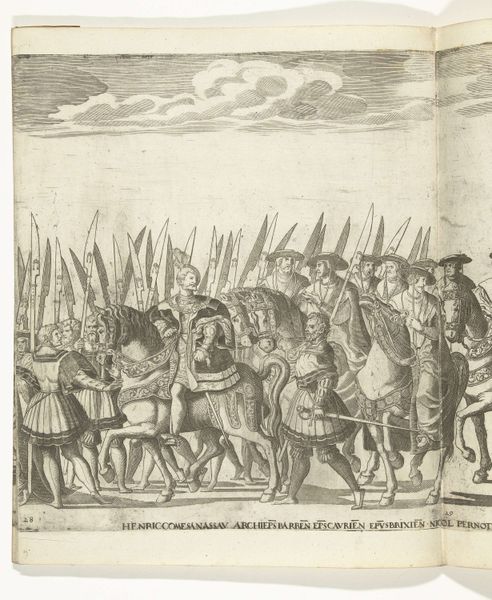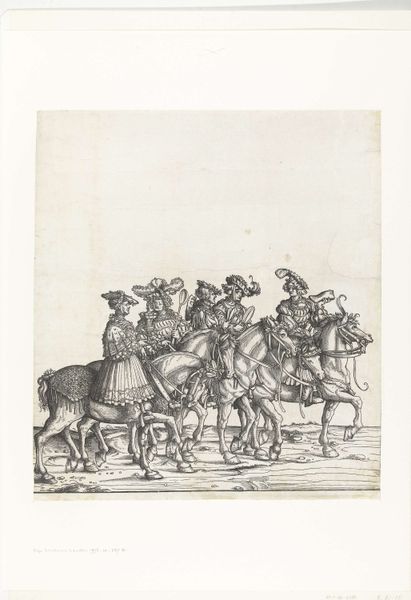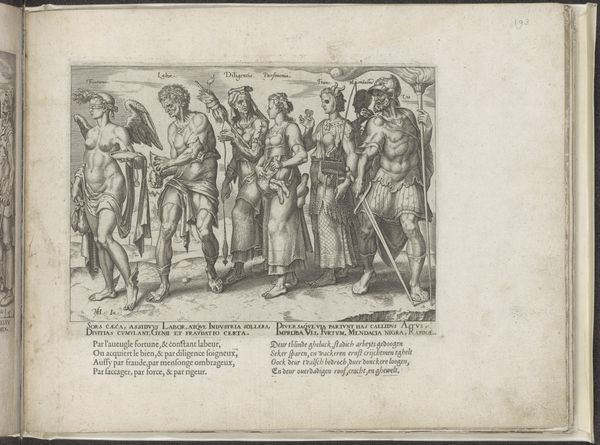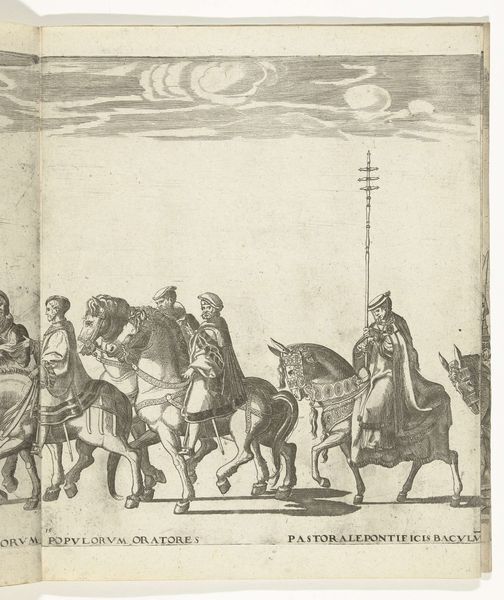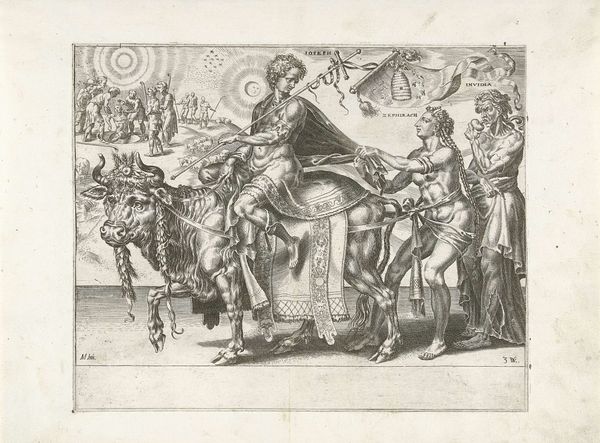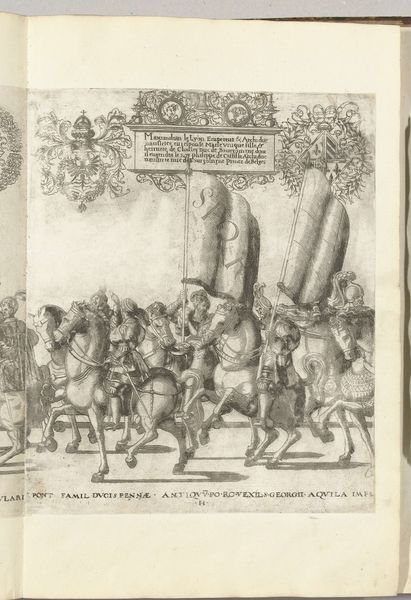
graphic-art, print, etching, engraving
#
graphic-art
# print
#
etching
#
11_renaissance
#
genre-painting
#
history-painting
#
engraving
Dimensions: height 330 mm, width 300 mm
Copyright: Rijks Museum: Open Domain
Curator: Nicolaas Hogenberg’s “Herauten, plaat 14” presents us with an intriguing procession of heralds on horseback. Created sometime between 1530 and 1699, it's a detailed engraving and etching on paper. What are your initial thoughts? Editor: It strikes me as somber, almost mournful. The monochromatic palette and the sheer number of figures all moving in the same direction... there's a real sense of collective purpose, but also of the weight of history bearing down on them. Curator: The use of engraving and etching allows for an impressive level of detail. Look closely at the textures of the horses’ coats and the intricate designs on the riders’ armor. Consider the skilled labor needed to create the copper plates used for this kind of printing at that time. Editor: Absolutely. The level of craft is undeniable. But what about the social context? This isn't just about skill, but about power and representation. Heralds, historically, were so important for communication and the construction of authority, right? Curator: Precisely. They were the voices and symbols of their lords. The very act of creating and circulating prints like this played a significant role in disseminating those messages and projecting that power. Think about how this print would have been made: the economics, the marketplace for art at this time, the ways in which prints democratized imagery. Editor: It prompts me to think about who these men are and where they are going, about the potential injustices they could either be reinforcing or maybe, just maybe, subtly subverting. There's a clear visual hierarchy in their garments. How much agency do the individuals have within that structure? How might class, rank, and even race affect one’s role? The faces are intriguing studies. Curator: That interplay between individual agency and societal constraints is very interesting, particularly when we think about these objects travelling beyond their initial context, being traded or collected and speaking in entirely new circumstances. Editor: It reminds us that art always exists within layers of political, economic, and social context. Curator: For me, it all starts with acknowledging the physical making, and understanding how production methods and available material contributed to these objects. Editor: And for me, considering the societal impact and asking questions about power. But ultimately, we are left with a work that inspires thought on its own.
Comments
No comments
Be the first to comment and join the conversation on the ultimate creative platform.
